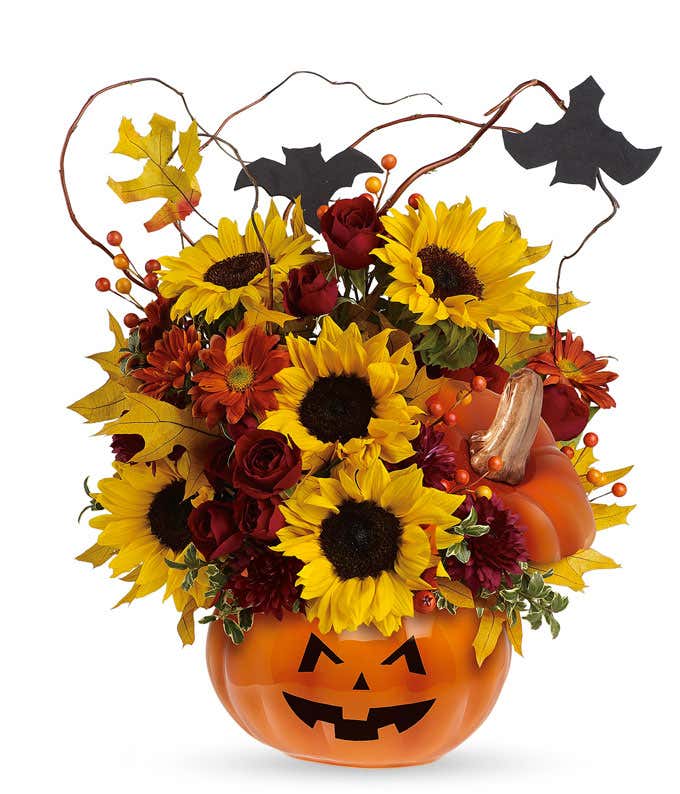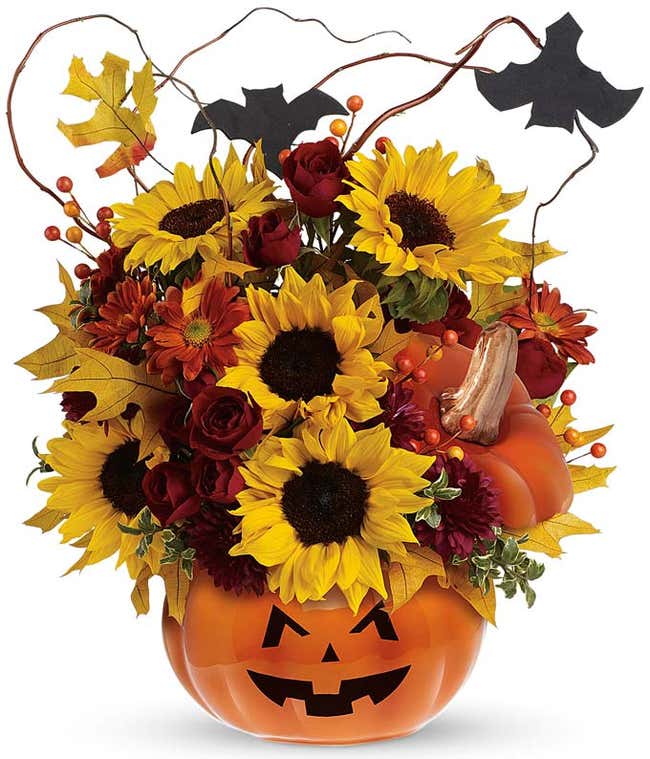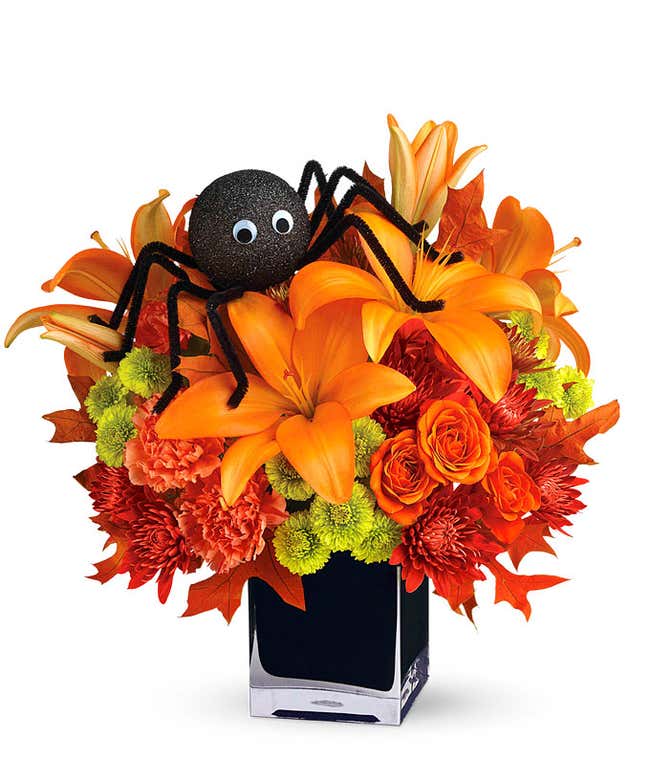- Flower Resource Guide Home
- Occasions
- Anniversary
- Birthday
- Business
- Christmas
- Christmas Around the World
- Christmas Decorating
- Christmas History Trivia
- Funeral & Sympathy
- Funeral and Sympathy Flowers
- Funeral and Sympathy Etiquette
- Types of Funeral Flowers
- Get Well
- Halloween
- This History of Halloween
- Halloween Decorating & Craft Ideas
- Mother's Day
- Gift Ideas for Mother's Day
- What Day Does Mother's Day Fall On?
- Mother's Day History
- New Baby
- Thank You
- Thanksgiving
- History of Thanksgiving
- Thanksgiving Flowers & Crafts
- Valentine's Day
- History of Valentine's Day
- Valentine's Day Flowers & Gifts
- Decorating with Flowers
- Flower & Plant Care
- How to Keep Flowers Fresh
- Flower Meanings
- Meaning of Roses
- Floral Astrology
- Flowers for Men
- Fun Flower Facts
- What are the Different Parts of a Flower?
- What are the Most Popular Houseplants?
- State Flowers
- New Jersey
- North Carolina
- Flower Names for Kids
- How to Make Chocolate Covered Strawberries
- What is the Purpose of Flowers?
- Benefits of Flowers and Plants
Have you ever wondered how the spookiest holiday of the year came into existence? The holiday we call Halloween has a very deep-rooted history. Halloween's roots can be dated back to the ancient Celtic festival of Samhain, as well as to the Christian holiday of All Saint's Day. Read on for a consolidated version of the origins of Halloween!
Origins of Halloween
A group called The Celts lived 2,000 years ago. They resided in the combined area that is currently Ireland, the United Kingdom, and northern France. The Celts celebrated their new year on November 1, the day which signified the end of summer and the harvest; it also marked the beginning of the winter. During this time in history, winter was linked with human death.
The Celts believed that the eve of their new year - October 31st - the line between the sectors of the living and the dead vanished. The Celts named the night of October 31st Samhain and celebrated. The Celts believed that on this night the spirits of the dead returned to earth to damage crops and cause trouble. The Celts also thought the spirits' presence enabled the Druids (also called Celtic priests) to see into the future. These predictions were a trusted source of useful information to this culture since they depended solely on the elements for their entire likelihood.

During this festival, the Celts would hold meaningful bonfires during which they would make sacrifices of livestock and crops. They also wore costumes to impersonate the spirits, as well as reading each other's fortunes. After the celebration was complete, the Celts commemorated its end by lighting their hearth fires--which they had put out earlier in the evening--from the bonfire. The Celts believed that this would protect them in the seasons to come.
Romans had conquered most of the Celtic territory by A.D. 43. Over the course of the Roman rule, two Roman festivals were combined with Samhain. Feralia - when the Romans commemorated the dead occurred in late October. The second celebration centered around paying tribute to the Roman goddess of fruit and trees - Pomona, whose symbol was the apple. The combination of this festival with Samhain may give us clues around the modern Halloween tradition of bobbing for apples.
Fast forward to the 800s when the influence of Christianity had made its way into the Celtic areas. Pope Boniface IV officially designated November 1st as All Saints' Day during the seventh century. This day was meant as a celebration to honor the saints and martyrs. Many people believe that this gesture was meant to replace the original Celtic festival with a religious and church-sanctioned holiday. Other names for All Saints' Day included All-hallows or All-Hallowmas, originating from the Middle English term 'Alholowmesse' meaning All Saints' Day. The night before this holiday began to be known as All-hallows Eve. Eventually, this turned into Halloween.
In A.D. 1000, the church designated November 2nd as All Souls' Day. This was also a day to honor the dead. All Souls' Day was actually celebrated somewhat like Samhain-complete with bonfires, costumes and parades.
Traditions and Pastime
Costumes:
It is widely believed that the custom of dressing up in costume was carried over from the Celtic celebration of Samhain. Today, popular costumes include traditional get-ups like spooky ghosts, monsters, witches and skeletons, as well as costumes depicting pop culture icons—including comic book heroes, movie stars and musicians. However, the sky is the limit when it comes to Halloween costume creativity!

Trick or Treating:
One of the most popular Halloween pastimes is Trick-or-treating. Kids go house to house, asking for treats - like candy - by asking the question: "Trick or treat?"? The word "trick" refers to the possibility of performing mischief on the homeowners' property if no treat is given.
Guising is a term used to describe a custom celebrated in some parts of Scotland. According to tradition, a child must earn their treats. Children will perform any sort of "show" like singing a song, performing a skit or telling a ghost story in order to receive their treat.
Jack-o-Lanterns:
The jack-o-lantern - a pumpkin carved with a scary face - is one of the most iconic Halloween symbols. Actually, the name itself has origins from an old Irish folk-tale about "Stingy Jack". In the legend, Stingy Jack was a greedy farmer who drank and gambled heavily. The story goes that Stingy Jack carved a cross into a tree in order to trick the devil into climbing a tree so he could trap him. As a result, the devil placed a curse on Stingy Jack, forcing him to wander the earth at night forever holding a candle inside a hollowed-out turnip.
Today families typically decorate their front steps for Halloween by carving scary or funny faces into big pumpkins and lighting candles inside, causing a ghoulish and dramatic effect.
Bobbing for Apples:
There are many speculations on the origins of bobbing for apples. One common belief is that it dates back to the Roman celebration which paid tribute to Pomona, the Roman goddess of fruit and trees. Pomona's symbol was the apple. It has become a common custom at Halloween carnivals and parties in modern-day times.
We hope we have taught you a few fun facts about Halloween...now, go out and carve your pumpkin and get your costume ready!




